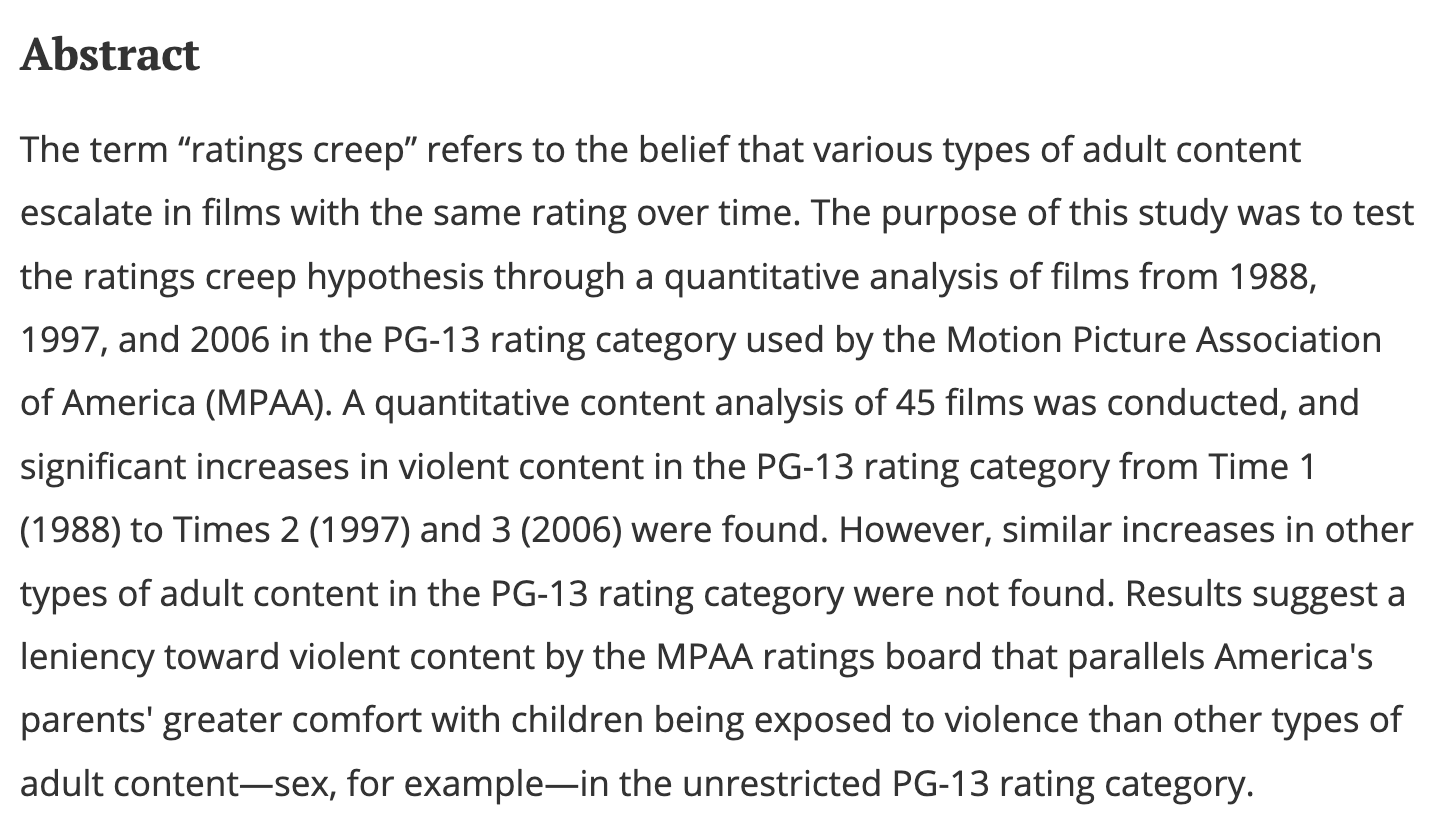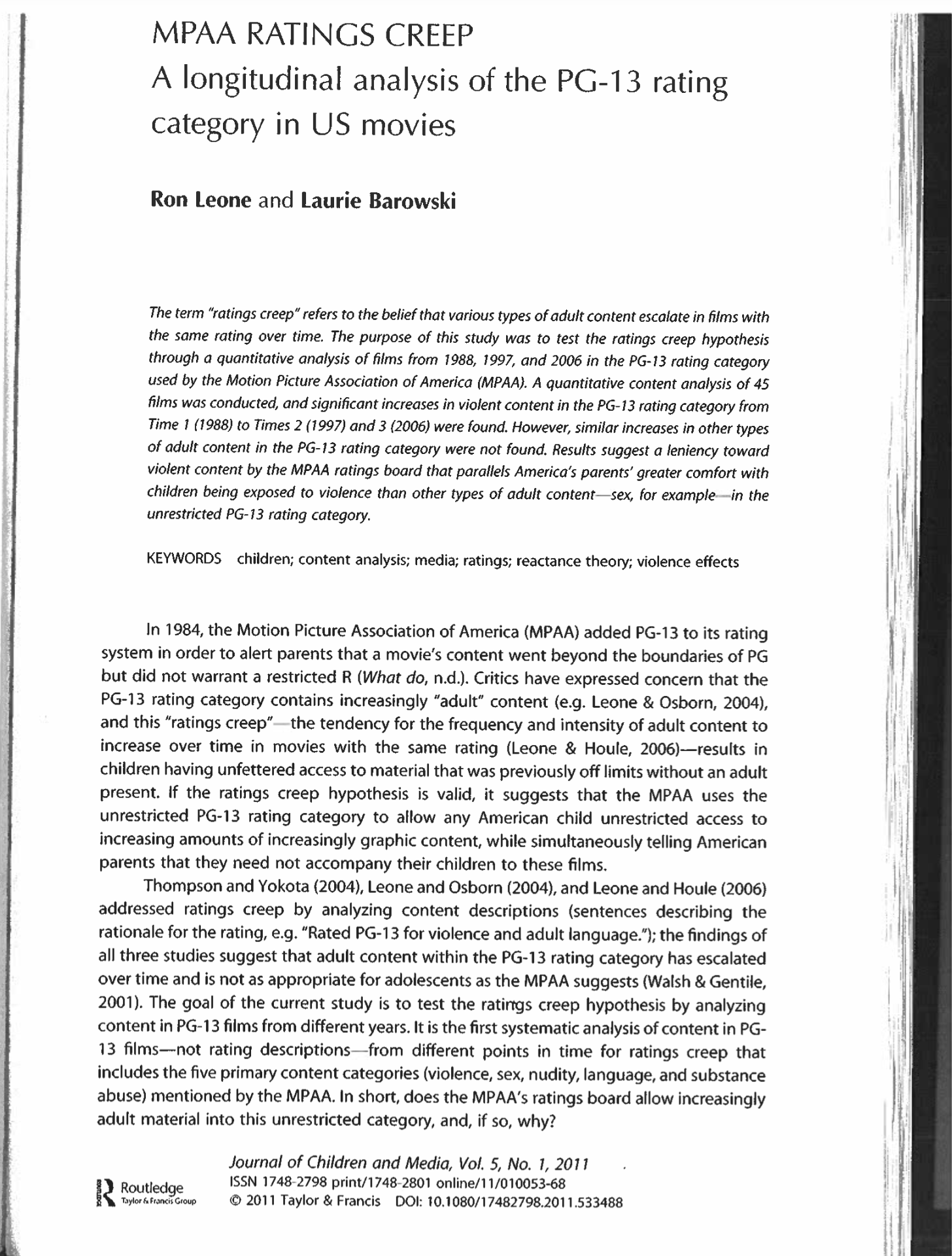Journal of Children and Media publishes study of a 2011 quantitative analysis that shows "ratings creep" through a significant increases in violent content in PG-13 movies from 1988 to 2006.
- Type
- Academic / Technical Report
- Source
- Ron Leone
- Hearsay
- DirectReprint
- Reference
Ron Leone and Laurie Barowski, "MPAA Ratings Creep," Journal of Children and Media 5, no. 1 (2011): 53-68
- Scribe/Publisher
- Journal of Children and Media
- People
- Ron Leone, Laurie Barowski
- Audience
- Reading Public
- Transcription
The term “ratings creep” refers to the belief that various types of adult content escalate in films with the same rating over time. The purpose of this study was to test the ratings creep hypothesis through a quantitative analysis of films from 1988, 1997, and 2006 in the PG-13 rating category used by the Motion Picture Association of America (MPAA). A quantitative content analysis of 45 films was conducted, and significant increases in violent content in the PG-13 rating category from Time 1 (1988) to Times 2 (1997) and 3 (2006) were found. However, similar increases in other types of adult content in the PG-13 rating category were not found. Results suggest a leniency toward violent content by the MPAA ratings board that parallels America's parents' greater comfort with children being exposed to violence than other types of adult content—sex, for example—in the unrestricted PG-13 rating category.
- BHR Staff Commentary
- Citations in Mormonr Qnas
The B. H. Roberts Foundation is not owned by, operated by, or affiliated with the Church of Jesus Christ of Latter-day Saints.


